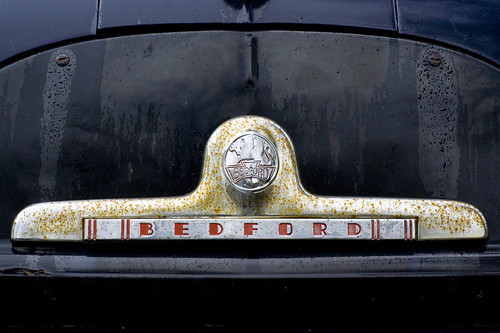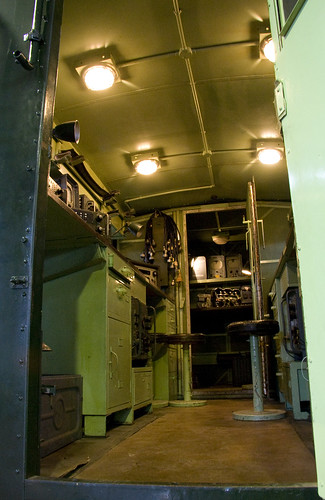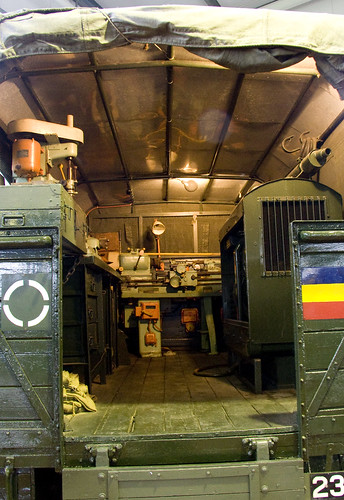The second building at the REME Museum of Technology is where all the vehicles are kept.
Obviously we saw tanks, and a helicopter (with the Easter Bunny as the pilot!), but I was particularly interested in the seemingly endless variations on the Bedford lorry. Not only were they used to transport both personnel and equipment, but also to rescue and maintain other vehicles.
This one’s kitted out as a self-contained communications base.
This one has a complete workshop inside, so that new parts could be manufactured to repair equipment. If you’re stuck in the middle of Africa, not to mention stuck in a war, you can’t exactly pop down to the local garage for spare parts for your tank. Vehicles like this allowed REME to make their own.
I have to confess to a certain fascination with lorries like these, with completely self-contained and often unexpected worlds inside.
I’ve been reading The Hermitage lately, whose author Rima used to live in a converted Bedford horse box. I’ve also been re-reading Wind in the Willows, and enjoying the colourful illustrations of Toad’s ill-fated Gypsy caravan. Which reminds me that I haven’t visited the Gypsy caravan at Blake’s Lock Museum (or what’s left of it) in far too long… and that reminds me that Carter’s Steam Fair is in Reading this weekend.
I’m not sure where this fascination with moveable houses comes from. Anybody who knows me would laugh at the thought of me being a traveller – I don’t drive, and I loathe being trapped in a car or on a train. The last time I ventured onto an aeroplane was thirteen years ago, and I get sick on boats. But there’s still something about the possibility of just pulling up your roots and moving on, whilst taking all of your belongings with you, that I find very attractive indeed.





